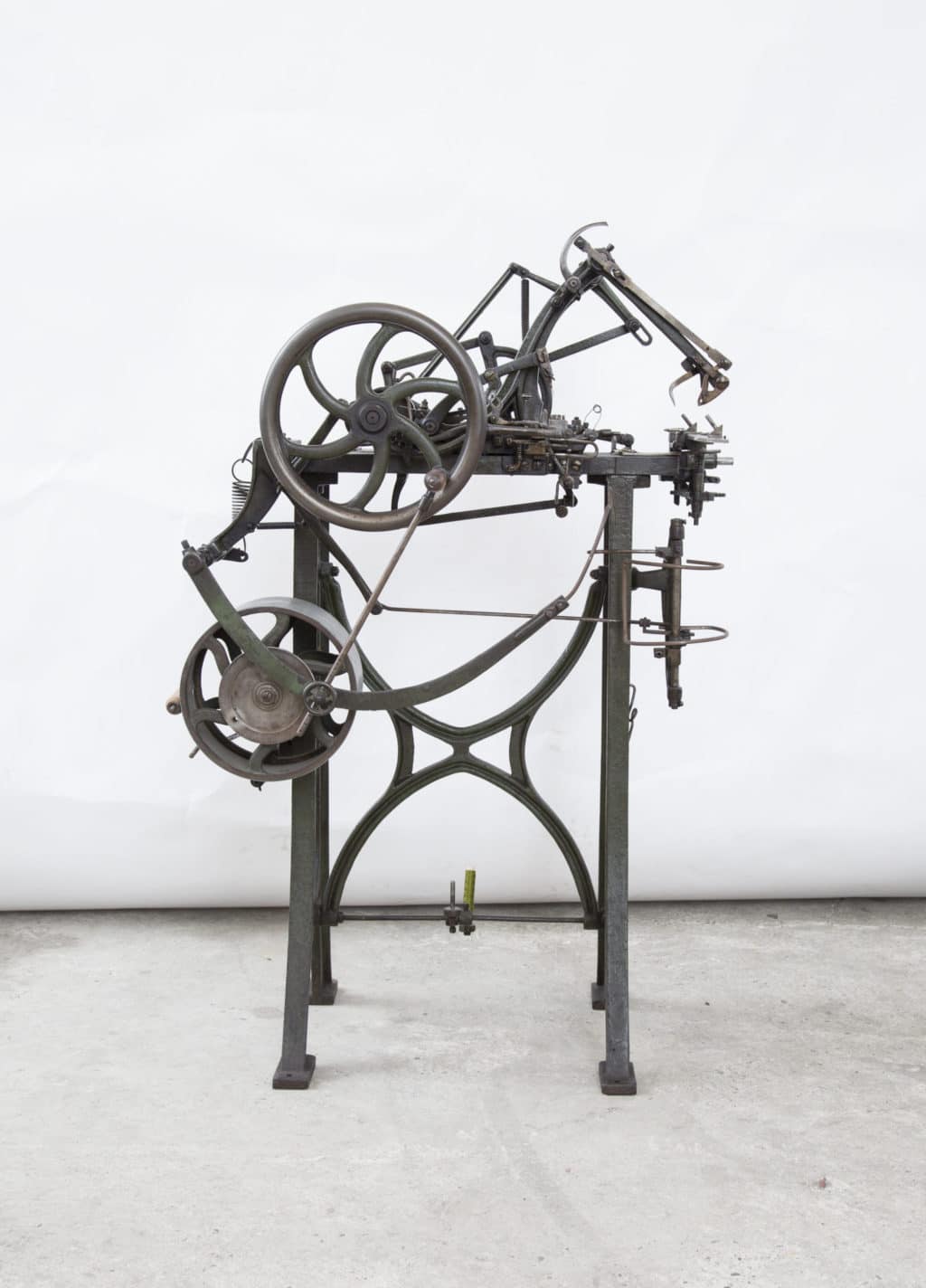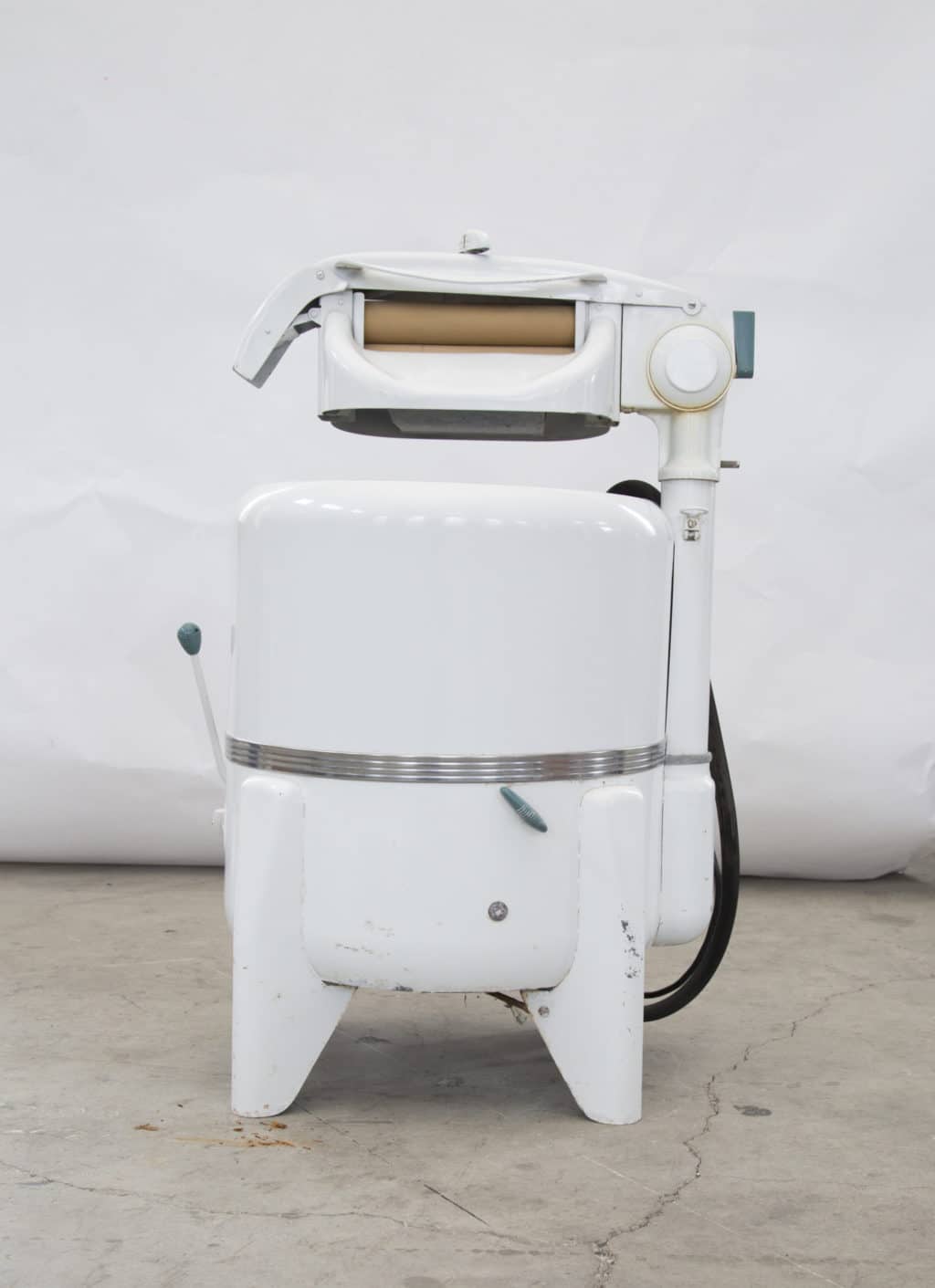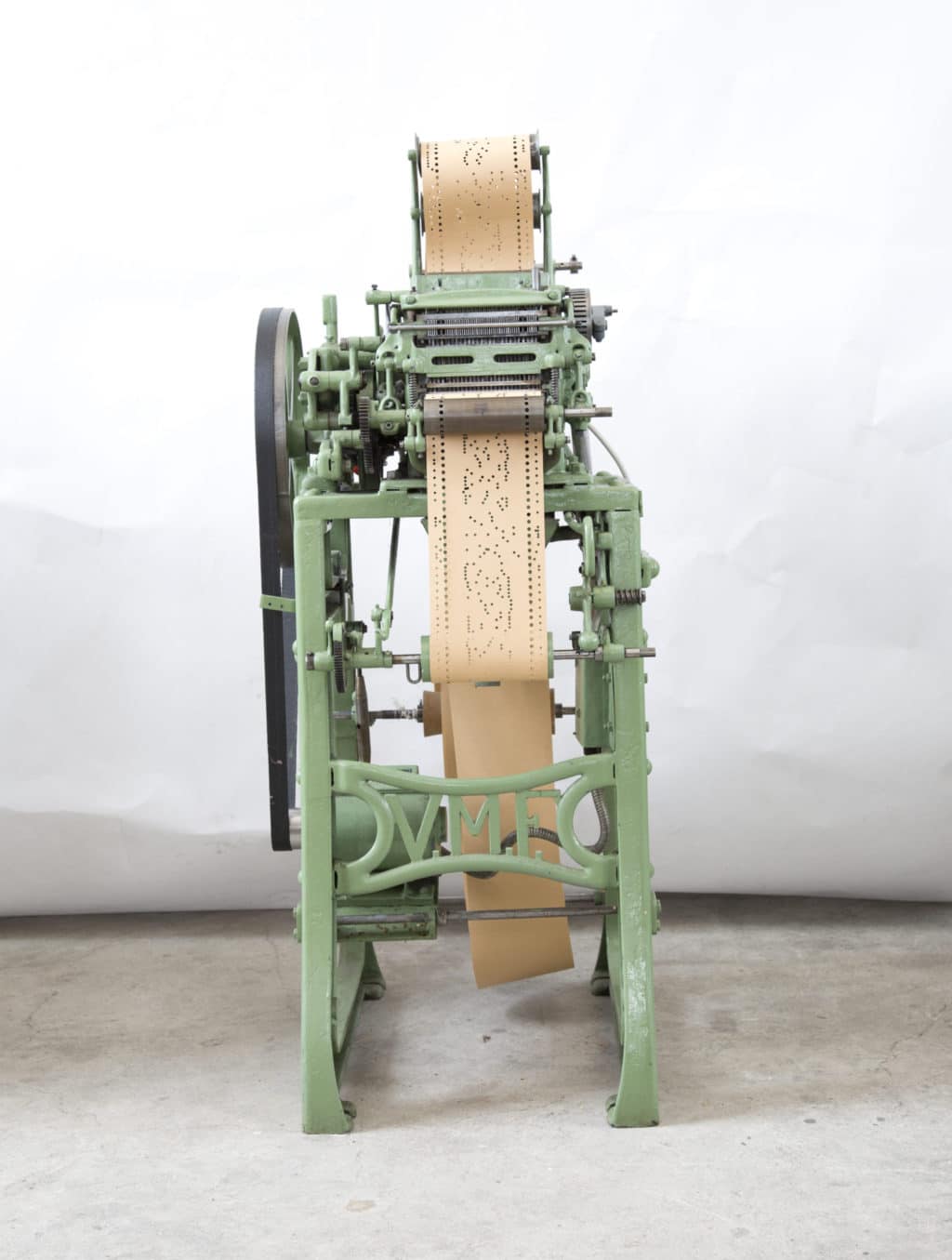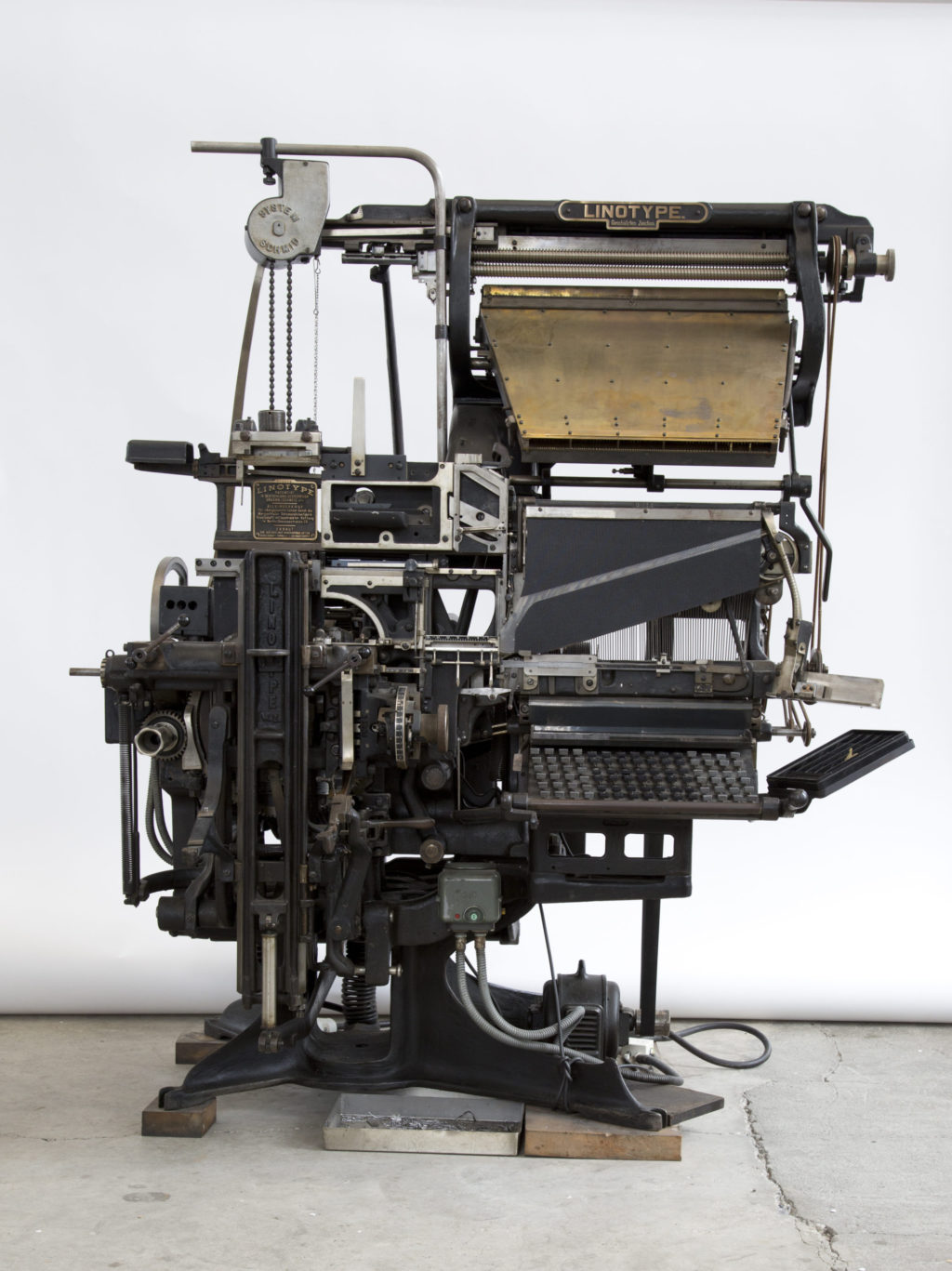





https://www.kunstraumdornbirn.at
These words from Karl Marx’s early writings are the title of the solo exhibition of Berlin artist Asta Gröting in Dornbirn/Austria.
In her broadly diversified artistic practice, the sculptor Asta Gröting has since the mid-1980s been translating sculptural thinking into a wide range of media. She develops works that render psychological and emotional perspectives on complex human relationships in lucid forms. In the installation Die Geschichte der Werkzeuge ist das aufgeschlagene Buch der menschlichen Psychologie (2017) (The History of Tools Is the Open Book of Human Psychology), Göring traces the sculptural dimension in the historical space of a simultaneously present and absent practice of handicraft.
Handicraft, or the relation of human beings to the work of their hands, is a recurrent theme of Gröting’s work. In Dornbirn, she has assembled workbenches (looms, sewing machine tables, embroidery machines, desks, lathes) in an installation drawing on the history of handicraft and industry in the Vorarlberg. By means of the dense juxtaposition of various kinds of worktables used in textile and metal ware production, the sculptor makes visible the transformation of Vorarlberg trades in the nineteenth and twentieth centuries, endowing the objects with a fresh language. They thus tell the story of the development of handicraft into industry and of the concomitant loss of the physical relation to work. The work-traces and the now hardly known technical functions of the workstations point to a blank space, to bygone users and their bygone skills, embedded in the objects. In her works, Gröting seeks to grasp the invisible in formal terms and give it shape.
In the video TOUCH (2017), the viewer sees the hands of the artist modelling a portrait made out of clay. In the course of the work a face emerges, and this develops into the first facial expression, which is then followed by different expressions. The oldest of humankind’s tools, the hands, form human emotions into a psychology without words.